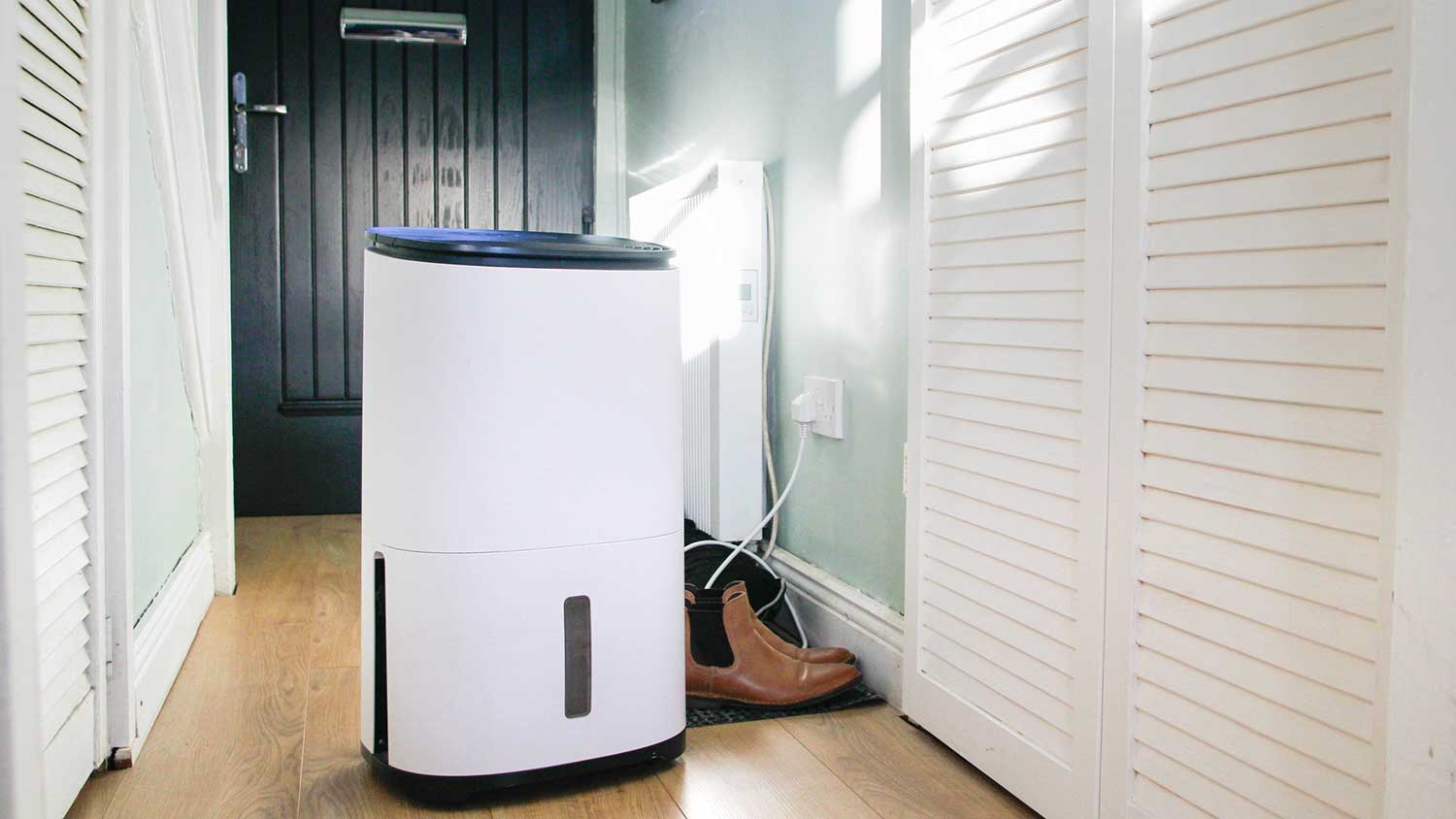How to Read a Thermostat: A Complete Guide
Learning about this household gadget will ensure you maintain a cozy temperature


There are several types of thermostats, including digital, manual, programmable, and smart options.
Most digital thermostats include the same basic functions, like temperature adjustment and different settings, but not all are programmable.
Certain tricks will help you save on energy costs during different times of the year.
If you can never get your home to a temperature that feels just right, that may be because you don’t know how to read a thermostat properly. Although it may seem straightforward, these heating and cooling devices can be more complicated than they appear.
Fortunately, there are a few tricks and basic facts that will make it easy to read and use a thermostat, no matter whether yours is manual or digital. Use this information to ensure your space stays cool in the summer and cozy during the winter.
How to Read the Temperature Display
Home thermostats come in several different shapes and styles, and each option functions differently.
Manual Thermostat
These analog temperature control devices are usually knob-shaped and attached directly to a heating or cooling unit, and in most cases, you can only operate them manually. That means you need to turn the handle to heat or cool a space, unlike digital thermostats which you can often program to turn on and off automatically. Although this type of thermostat is a common feature of older buildings, new construction homes mostly rely on digital and smart options.
Manual thermostats are fairly easy to read and control. The handles are marked with numbers or levels that indicate temperature so that you can turn them to the right spot. The top number on a manual thermostat is the temperature you have set for the room, and the bottom number is the current temperature that the room is at.
Digital Thermostat
If you live in a newer building, odds are this is the type of thermostat you have. These devices consist of a flat panel with a screen that you can install anywhere in your home, and it doesn’t need to be next to a heating or cooling unit—though where they’re placed can have an impact on the accuracy of its readings. Though you can program most digital options, not all are programmable.
On a digital thermostat, the larger number represents the current temperature of the room. The smaller number, often to the right of the large one, represents the temperature you want the room to be at (the “set” temp). You can change the set temperature with the arrow buttons on the unit.
Programmable Thermostat
You’re unlikely to find an analog thermostat that’s programmable, but most digital options fall into this camp. You can set programmable thermostats to an ideal temperature and they will adjust to heat or cool whenever the inside of your home goes above or below this level. The self-regulating feature also makes them a great option for cutting down on energy costs.
Like on a digital thermostat, programmable thermostats have a large number in the middle that shows the current temperature and a smaller number off to the side that shows what you’ve set the temperature to.
Smart Thermostat
If you’ve ever dreamt of walking around with your thermostat in your pocket, this is the option for you. Like digital thermostats, smart thermostats have a flat screen that’s installed somewhere in a home. Unlike older digital thermostats, you don’t need to be standing directly in front of it to control it. For example, if you’re not in the house but get an alert that the A/C is on, you can use an app on your smartphone to turn it off no matter where you are.
Smart thermostat displays are very different from brand to brand. Many of them display information the same way as standard digital and programmable options. You should see a “set to” temperature, which is often the largest number on smart thermostats, and a “current” temperature above or below it. You may have a model that only displays the current temperature until you adjust the screen or change settings in your app. You can change the set temperature by tapping the touch screen, rotating the ring around the unit, or using your app.
Understanding Your Thermostat Settings
There are lots of thermostat settings, and they can be confusing. Here’s what you need to know about the most important ones.
Using the Fan Setting
The fan setting on a digital thermostat allows you to circulate air in your home without changing the temperature. You can typically choose between running the fan solo or at the same time as the air conditioning or heating, so this setting gives you greater control over the internal conditions of your home.
Using the Timer Setting
This setting allows you to program your thermostat for the time, day, or even weeks when you want to heat or cool your home. For example, if you want to lower your home’s temperature during the day when you’re not home, you can program that schedule into your thermostat. Click the timer icon and follow the prompts to set up your system, using your user manual to guide you through the process.
Tips for Setting Your Thermostat Properly

There are a handful of ways to ensure your thermostat always works efficiently. Here are some tips on how to use a thermostat.
Install Your Thermostat in the Right Spot
Although you can place most digital thermostats anywhere in your home, certain locations will help it function more efficiently. For example, placing a thermostat in a particularly drafty area won’t give you an accurate reading of the entire space. As a result, it may cause programmed thermostats to turn on or off when it’s not necessary.
For best results, make sure your local thermostat pro installs thermostats in areas that accurately reflect the overall temperature of your abode. The best spots tend to be places where you spend most of your time and that are far away from any external forces that could impact—like a hot shower or a preheated oven.
Avoid Dropping the Temperature Too Quickly
While it’s tempting to crank the A/C when it’s sweltering outside, experts say that keeping the thermostat at a modest temperature will keep your energy bills down—between 72 and 78 degrees Fahrenheit. You should avoid dropping the temperature to an extremely cold setting because doing so uses much more energy and doesn’t cool your home faster. You should also turn off any automatic settings when you’re not at home, so energy isn’t wasted cooling your space when you’re not there to enjoy it.
Set Your Thermostat Strategically
The trick to successfully heating your home during the winter is knowing when and how to set your thermostat. For best results, keep the temperature low when you’re not home or when you’re getting warmth from elsewhere—like a piping-hot oven or blankets. If you have a digital or smart thermostat, you can program the temperature to increase slightly before you get home so it’ll reach a comfortable temperature when you walk through the door.
Frequently Asked Questions
If you notice your thermostat acting weird, there’s a simple way to ensure it’s working. Tape a thermometer next to the control panel and let it sit until it’s adjusted to the temperature of your space—about 15 minutes. If the numbers don’t match, there’s a bigger problem, and you may need to hire a local thermostat repair pro to get to the bottom of it.
Thermostat replacement costs $180 on average, but the price can range from $100 to $270. Your final price will depend on the brand and type of thermostat you choose in addition to labor costs in your area. Smart models will cost significantly more than standard models that don’t have extra features, like pre-programming and habit learning.





- Furnace Repair
- Air Conditioning Repair
- HVAC Repairs
- Furnace Installation
- Wood & Pellet Stove Repair
- Dehumidifier & Humidifier Repair
- Heat Pump Companies
- Swamp Cooler Repair
- Wood Stove Services
- HVAC Companies
- Commercial A/C Repair
- Geothermal Installation
- Air Conditioning Installation
- Boiler Repair
- 24 Hour Furnace Repair
- Geothermal Repair
- Heat Pump Repair
- Humidifier Installation
- Thermostat Repair
- Thermostat Installation
- Nest Installation
- Heating & Cooling
- Heating Repair
- Furnace Cleaning
- Furnace Tune-Up
- HVAC Technicians
- Subcontractors
- Furnace Maintenance
- Plumbing & Heating Companies
- Wood Stove Inspection
- Mini Split Installation
- Wall Heater Repair
- Duct Installers










